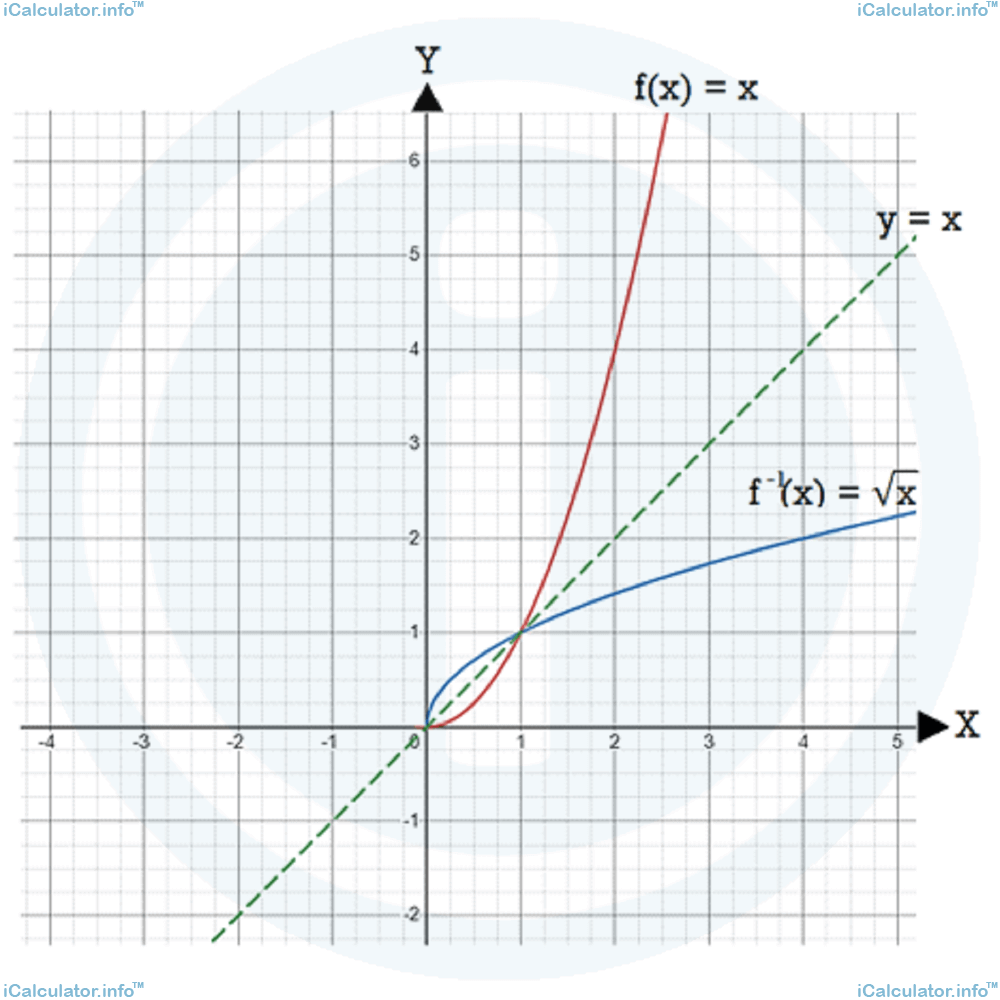Menu
Math Lesson 16.6.5 - Sections where a Function has an Inverse although it may not be One-to-One
Please provide a rating, it takes seconds and helps us to keep this resource free for all to use
Welcome to our Math lesson on Sections where a Function has an Inverse although it may not be One-to-One, this is the fifth lesson of our suite of math lessons covering the topic of Inverse Functions, you can find links to the other lessons within this tutorial and access additional Math learning resources below this lesson.
Sections where a Function has an Inverse although it may not be One-to-One
In the previous lessons in this tutorial, we explained that it is necessary for a function to be one-to-one in order to have an inverse. This restriction automatically excludes some functions; for example, quadratic functions cannot have an inverse because the graph contains two halves that are symmetrical to a vertical line, this in turn makes two x-values have the same f(x). When the function is inverted, the relation obtained has two y-values for the same x-value. Consequently, the quadratic function is automatically disqualified from being a function.
However, for certain restricted domains, even quadratic functions (as well as other types of functions that normally don't have an inverse) become one-to-one. Therefore, they may have an inverse f - 1(x) given the condition that the domain of f(x) must be the range of f - 1(x) and the range of f(x) must be the domain of f - 1(x). For example, the function f(x) = x2 has an inverse for x ≥ 0 but not for every x in the set of real numbers. This is because the inverse operation of raising a number at the second power is taking its square root, but this operation is only possible for positive x-values (the square root of negative numbers does not exist in R). Hence, if f(x) = x2 for x ≥ 0, then f - 1(x) = √x (again, for x ≥ 0).
The above reasoning is also confirmed by the graph, given that the two functions must be symmetrical to each other where the line y = x is the symmetry axis. Look at the figure below.

Example 6
For the function
find:
- Find the formula of the inverse function f - 1(x) in the given domain.
- The values of x for which the function f(x) has an inverse.
Solution 6
- The function f(x) = x2 + 2x + 1is the expanded form of the binomial (x + 1)2. Thus, we writef(x) = (x + 1)2The inverse of this function must include the inverse operation of raising in the second power. This inverse operation is the square root - an operation determined only in the positive part of the real numbers (including zero). Applying the procedure used for finding the inverse function for x ≥ -1 yieldsf(x) = x2 + 2x + 1
= (x + 1)2
(x + 1) = √f(x)
x = √f(x) - 1
f-1 (x) = √x - 1 - The above inverse function f - 1(x) is defined for x ≥ 0. This corresponds to the range of the original function f(x). This fact reaffirms the theory that the range of the original function corresponds to the domain of the inverse function.
You have reached the end of Math lesson 16.6.5 Sections where a Function has an Inverse although it may not be One-to-One. There are 6 lessons in this physics tutorial covering Inverse Functions, you can access all the lessons from this tutorial below.
More Inverse Functions Lessons and Learning Resources
Whats next?
Enjoy the "Sections where a Function has an Inverse although it may not be One-to-One" math lesson? People who liked the "Inverse Functions lesson found the following resources useful:
- One To One Feedback. Helps other - Leave a rating for this one to one (see below)
- Functions Math tutorial: Inverse Functions. Read the Inverse Functions math tutorial and build your math knowledge of Functions
- Functions Revision Notes: Inverse Functions. Print the notes so you can revise the key points covered in the math tutorial for Inverse Functions
- Functions Practice Questions: Inverse Functions. Test and improve your knowledge of Inverse Functions with example questins and answers
- Check your calculations for Functions questions with our excellent Functions calculators which contain full equations and calculations clearly displayed line by line. See the Functions Calculators by iCalculator™ below.
- Continuing learning functions - read our next math tutorial: Even and Odd Functions
Help others Learning Math just like you
Please provide a rating, it takes seconds and helps us to keep this resource free for all to use
We hope you found this Math tutorial "Inverse Functions" useful. If you did it would be great if you could spare the time to rate this math tutorial (simply click on the number of stars that match your assessment of this math learning aide) and/or share on social media, this helps us identify popular tutorials and calculators and expand our free learning resources to support our users around the world have free access to expand their knowledge of math and other disciplines.